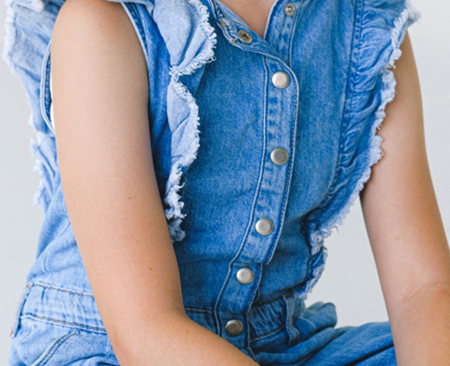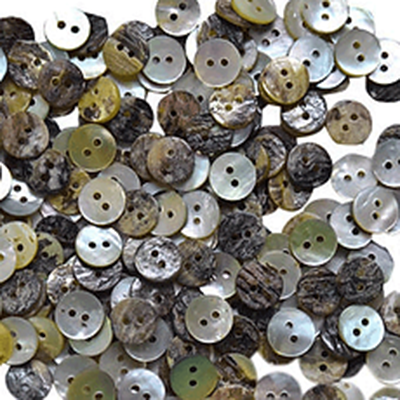The need for "Food - clothing - shelter - action" (eating, clothing, shelter, travel) is closely linked to people in their daily life activities. Among them, "dressing" plays the second most important role and is the traditional beauty of the Vietnamese people: "Beautiful people because of silk, good rice because of dung". On the occasion of the Tailor's death anniversary (12th day of the 12th lunar month), let's try to find out why from ancient times until now, clothes always have 5 buttons.
Costumes past and present
In ancient times, each shirt, whether short or long, had to have five buttons, symbolizing the "five wheels" according to Confucianism, which are the five precepts in social relationships between people. These are the king and I, teachers and students, father and son, husband and wife and friends.
The number five is also the five elements: Metal - wood - water - fire - earth.
The number five is also the five usuals symbolizing the Confucian gentleman: Humanity – propriety – righteousness – wisdom – faith.
The number five also symbolizes the five aggregates: Form – feeling – perception – actions – consciousness in Buddhist philosophy.

In the Q&A about Saigon, Ho Chi Minh City, many authors, volume 3 Arts and Culture, pages 7- 12, write:
Clothes of common people:
Men often wear shorts or loose pants while working. collarless, sleeveless leaf shirt, dyed brown or black. This type of clothing is sewn from Vietnamese fabric, so it is also called a bait shirt.
Women often wear short-sleeved or long-sleeved shirts over a camisole with long pants. It was raining and both men and women were wearing raincoats. The shirt is made of nipa palm leaves so it is quite heavy.
Another type of shirt worn by common people is the mid-collar shirt. Short shirt, buttoned to the chest, men's shirt has armholes, women's shirt is closed.
Both men and women wear spring rolls bottom pants. Two-color pants. The bottom and two lower legs of the pants are made of brown or black fabric. Above is the waist of the pants about two inches high, made of blue or white fabric. Many women are discreet and like to wear very long pants. When the back is pulled out and pulled straight, it reaches the armpit, so it is called "armpit pants". The belt is used as a fulcrum to hold the pants and the waist of the pants.
Ao dai is the traditional costume of Vietnamese people. Before 1945, there were many old women wearing black cloth ao dai to carry goods to the market to sell or wearing ao dai to plant crops. They tied two flaps around their hips.
Ao "chit" (ao chiec) is a single shirt, with straps, long sleeves but slightly loose, buttoned on the right side. Ao chiec made of silk or chiffon, worn in the summer.
Ao "lot" (cap) is a type of shirt that has the same shape as ao chiec but is sewn in two layers. The inner layer is made of plain silk, the outer layer is made of velvet, brocade or a precious type of silk, with beautiful patterns.
Ao song khai is a type of shirt buttoned in front of the chest, with long, wide sleeves, with or without laces, the back flap is slit up to the waist and the two sides are closed, so it is called "double manifest" (i.e. open in the front and open at the back). People wearing Song Khai robes often wear top hats and horse shoes.
Buttons are very precious. Short shirts are often beautifully buttoned. The beautiful button is made of conch, so it is called the "snail" button. There are also cases where beads are used. The beads are usually made of gold, brass, or bone ivory.

Nowadays, costumes are very stylized. The shirt has 4, 5, 6 buttons. Even the ao dai has been innovated. According to scholar Dao Duy Anh, he wrote: “According to the book History, the ancient Van Lang people, that is, our ancestors, wore ao dai on the left side. History records that in the first century, Nham Dien taught the people of Cuu Chan district to use Chinese clothing. According to those books, we can infer that before the Northern domination, Vietnamese people pinned their shirts to their left hand, but after imitating the Chinese, they wore their shirts to their right hand.
Who is the Tailor's Patriarch?
Legend and history both recognize Mrs. Nguyen Thi Sen as the Holy Patriarch of Vietnamese tailoring.
Mrs. Nguyen Thi Sen (? – ?), was the concubine of King Dinh Tien Hoang in Vietnamese history. She is considered the founder of tailoring. She is from Trach Xa village, Hoa Lam commune, Ung Hoa district, Hanoi.
According to the legend of the ancestral temple in Trach Xa, the founder of the tailoring profession is Nguyen Thi Sen, a beautiful and capable daughter of Trach Xa village. Legend has it that Nguyen Thi Sen was the fourth concubine of King Dinh Tien Hoang, who married the King when he came here to recruit heroes. Returning to the capital city of Hoa Lu, Nguyen Thi Sen was given the title of fourth concubine. With her ingenuity and creativity, she helped the royal ladies develop and create the sewing profession in the king's palace. After King Dinh Tien Hoang died, she left the royal palace with her children and returned to her hometown to teach the profession to the people in the village. When she passed away, a temple was built and she was honored as the founder of the traditional ao dai craft (According to the open encyclopedia Wikipedia).